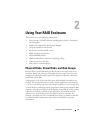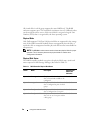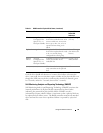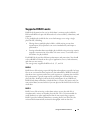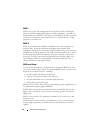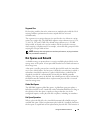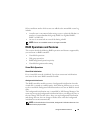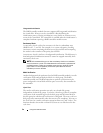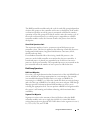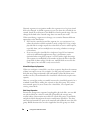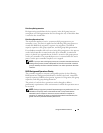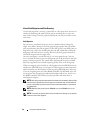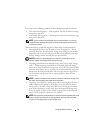
34 Using Your RAID Enclosure
called copy back. By default, the RAID controller module automatically
configures the number and type of hot spares based on the number and
capacity of physical disks in your system.
A hot spare may have the following states:
•A
standby hot spare
is a physical disk that has been assigned as a hot spare
and is available to take over for any failed physical disk.
•An
in-use hot spare
is a physical disk that has been assigned as a hot spare
and is currently replacing a failed physical disk.
Rebuild
If a disk fails in a fault-tolerant disk group (RAID 1, RAID 5, and RAID 10)
and a hot spare is available, the RAID software automatically attempts to
rebuild the data to restore redundancy. If no hot spares are available, an
automatic rebuild occurs when a new physical disk is installed. You can use
MD Storage Manager to specify a physical disk to rebuild.
The requirements for a replacement physical disk are the same as those for a
hot spare: the capacity should be equal to or larger than the size of the
configured capacity on the physical disk it replaces, including its metadata.
NOTE: For a stripe set of mirrors (RAID 10), it is possible for multiple disks to fail
without a virtual disk failure.
Media Errors and Unreadable Sectors
If the RAID controller detects a media error while accessing data from a
physical disk that is a member of a disk group with a redundant RAID level
(RAID 1, RAID 5 or RAID 10), the controller will try to recover the data from
peer disks in the disk group and will use recovered data to correct the error. If
the controller encounters an error while accessing a peer disk, it is unable to
recover the data and affected sectors are added to the unreadable sector log
maintained by the controller.




